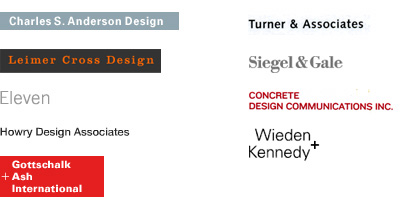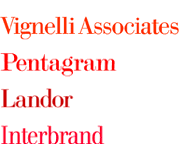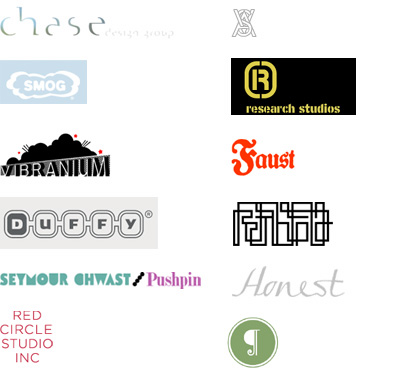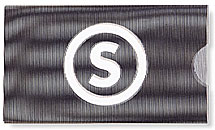If you take a quick look at Logo Smackdown or Logo Smackdown Deux, you’ll see a wide range of logos, but most of them have some kind of drawing, word play, visual play or pun … something that gives that company personality in some way. Most of us do this kind of work all the time, and let’s face it, it’s not that hard. It’s quite fun, actually.
And then there’s us. Us. Ourselves. Why is it so hard to work on our own identity?
I’m just going to assume that you know what I mean. That desperate, sinking feeling when the time comes to do or redo the identity for your own company. If you have no ideas, you have too many ideas; and more than any other design project this is the one most likely to fall into disfavour even before ink has hit paper. I myself am guilty guilty guilty of changing my company look (and OK, my company name) almost as often as I buy a new pair of shoes. It’s never good enough. It’s never right.
So I took a look around … on the web and through my business cards and I found a surprising pattern. Now, I did not solicit complete business sets from tens of companies and I’m aware of the limitations of that. Most of these examples are indicative of how they project themselves on the web and may not even be representative of their true logo or identity. But I have to work with what I’ve got.
So, is there some reason that so many design companies just set their name in a line (or two) of type?

Is it that many design firms don’t want to project a strong personality? Maybe they don’t want to make a statement (other than Simply Professional) for fear of scaring those big corporations off. Maybe the message is that they are a blank slate on which an unlimited number of possibilities will be drawn. Or maybe … maybe this is an indication of the big Design Freakout.
And, it seems the bigger they are, the less distinct their graphic persona. Is this because when you’re that big you don’t need to appear distinct (because you already are)? Or is it that the bigger companies have a gazillion partners who need to be represented collectively and so they just … you-know.

I asked Michael Bierut about Pentagram’s logo (note his response to the term):
I’m not sure I agree that “it is so hard to design for ourselves” as I prefer a line of well-set type to the self-conscious, frantic stuff that designers do to show off their moves. I do agree that when the only requirement is to be cool, you can never be cool enough, and that is hard. I sense that most of the Pentagram partners who have joined since 1972 have been a little relieved to not have to come up with a logo (or a name). It is not a task I envy.
So despite feeling a little self-conscious and frantic, I also feel a little brave. Michael may not have to endure this design freakout, but it sounds like things weren’t a lot easier in 1972.
But if a line of well-set type is the way to go. Which type? And what about that box?

And what if you really are cool? What if coolness is what gets you business? And what about those other criteria—location, history, wordplay, pets—the factors we take into consideration when creating identities for our clients? Can you tell how young a company is by how much fancy shit they put into their identity? Is it only the small, single-owner studios that have the (endless) time and (infinite) desire to represent their personal aesthetic? It would appear not.

I asked Steve Carsella about Vibranium’s logo:
Those were the things I was going for. Well, that and my ongoing Machiavellian desire to merge “psychedelic” with “victorian”.
Did you hear that? He said, “it’s me.” Sounds like success.
Disturbingly, I’m beginning to think it’s all about confidence. Maybe the line is drawn between those who understand and are at peace with who they are, and those who aren’t.
Stefan Sagmeister says,
I am now in Berlin where the S-Bahn (the above the ground subway) has a similar one, and came from South Africa where the no parking sign looks smack the same (albeit crossed out).

Or maybe, if you nail it, you nail it and that’s the end of it.
Where some seem to have found themselves and stuck with it, others take the opposite approach. When I heard that Thirst doesn’t have a set identity, I talked to Rick Valicenti:
they are just moods, and emotional artifacts
identities should never linger too long for fear one remains locked in time defined graphically by who they once were … yes, change is good …
sadly, designers do not practice this truth and culture is contaminated with well intentioned branding that just rots along the side of the road.
There is truth there, too. People change, right? Our companies change and our work changes. It would be unreasonable to expect that we would have to come up with the graphic identity that will represent us for a lifetime, or even years, or … in my case, months.
So where does that leave those of us who still struggle? How do we find the balance between “personality” and “self-conscious”? As we get bigger, older and more established, do we trade our groovy logos in with our trendy clothes? When we understand ourselves, does the Design Freakout end? Do we eventually become so comfortable with who we are, we can just pick a good Bodoni and go for it? Are we all destined to end up in black cardigans with a single line of some classic typeface for our identity? Or maybe even …

*No aspersions are being cast on any of the logos (or lack thereof) represented here.
Thanks to Diane Witman for the topic.








identities should never linger too long for fear one remains locked in time
When will we insist that our canonized graphic design like landmark architecture be conservered rather than discarded.
Hmm... ;o)
On May.21.2004 at 09:30 AM